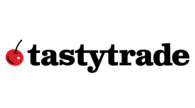Inverse ETFs are exchange-traded funds designed to move in the opposite direction of an index. So an inverse, or bearish, ETF that bets against the S&P 500 will go up when the S&P 500 goes down.
Investing in inverse ETFs can be a good way to hedge your portfolio against market downturns. But profiting from these ETFs takes careful due diligence.
Inverse ETFs are also called short ETFs.
These 10 ETFs track inversely to the market
These are the top inverse ETFs as of March 2021, according to the ETF Database. Many of these ETFs have experienced negative year-over-year returns, which could be due to the relatively strong recent performance of the American stock market. But these are known to have stronger returns in the short term. To trade ETFs, you’ll need a brokerage account.
ProShares Short MSCI EAFE
- Ticker: EFZ
- 1-year return: -34.4%
- Assets under management: $11.5 Million
- Expense ratio: 0.95%
This ETF is designed to move in the opposite direction of an index made of stocks in European Australasian, and Far Eastern markets. So investors feeling bearish over these sectors may be interested in the Short MSCI EAFE ProShares ETF.
ProShares Short Dow 30
- Ticker: DOG
- 1-year return: -37.1%
- Assets under management: $308.8 Million
- Expense ratio: 0.95%
This ETF aims to move in the opposite direction of an index that invests in American blue chip companies, particularly the Dow Jones Industrial Average. So it may produce strong returns when major American companies in that index experience losses in share price.
However, the index has in recent times been experiencing an overall gain and recently broke records. So it may be best to monitor this ETF closely before jumping in.
ProShares UltraShort Utilities
- Ticker: SDP
- 1-year return: -41.6%
- Assets under management: $2.0 Million
- Expense ratio: 0.95%
This ETF offers 2x daily short leverage to the S&P 500 Index. It can be useful for investors when the stocks of large companies in the S&P 500 are in decline as many did during the onset of the COVID-19 pandemic.
In fact, the S&P 500 experienced a fall of 34% between February 19 through March 23 of 2020, pushing it into bearish territory. While the index has since recovered its losses, this ETF can spell large returns should the index experience a similar downfall.
ProShares Short FTSE China 50
- Ticker: YXI
- 1-year return: -32.3
- Assets under management: $4.1 Million
- Expense ratio: 0.95%
This ETF aims to bet against an index that invests primarily in Chinese equities. Its return profile can be substantial when the Chinese market is in decline.
At the moment, China is experiencing a bear market. So it may behoove investors to look into the ProShares Short FTSE China 50 and similar inverse ETFs investing in Chinese equities.
ProShares Short Financials
- Ticker: SEF
- 1-year return: -40.8%
- Assets under management: $12.3 Million
- Expense ratio: 0.95%
This ETF is designed to move against the Dow Jones US Financials Index. So it can deliver strong returns when the values of major financial companies are in decline. During the COVID-19 outbreak, interest rates dipped to near-historic lows, which hurt profits in the banking and financial services sector. If you’re bearish on the industry’s recovery, the Short Financials ProShares ETF may be a good bet.
Direxion Daily S&P 500 Bear 1x Shares
- Ticker: SPDN
- 1-year return: -38.2
- Assets under management: $135.3 Million
- Expense ratio: 0.50%
This is another ETF designed to generate performance opposite to the S&P 500, which contains some of the biggest blue-chip companies in America. Investors may want to consider this ETF when that index is underperforming.
ProShares Short S&P 500
- Ticker: SH
- 1-year return: -38.7
- Assets under management: $1,759.6 Million
- Expense ratio: 0.90%
Also designed to perform in the opposite direction of the S&P 500, this ETF can be useful during bear markets. But it’s expense ratio is quite large compared to other ETFs on our list.
ProShares Short MSCI Emerging Markets
- Ticker: EUM
- 1-year return: -40.5
- Assets under management: $22.1 Million
- Expense ratio: 0.95%
This ETF aims to net gains in the opposite direction of an index that invests in stocks of companies in emerging markets. When these sectors are seeing share prices dip, investors may see a sizable profit.
However, the index has performed well in recent years. It may be a good idea to keep this ETF on your watchlist before investing in it.
Short Oil & Gas ProShares
- Ticker: EUM
- 1-year return: -57.53
- Assets under management: $2.5 Million
- Expense ratio: 0.95%
When domestic oil and gas stocks are falling, investors may want to consider this ETF. It’s designed to move in the opposite direction of the Dow Jones U.S. Oil & Gas Index. As businesses and political forces move toward renewable energy sources, the oil sector may see a massive decline in 2021. This could mean good profits potential for the Short Oil & Gas ProShares ETF.
Direxion Daily CSI 300 China A Share Bear 1X Shares
- Ticker: CHAD
- 1-year return: -37.6
- Assets under management: $324.7 Million
- Expense ratio: 0.85%
This ETF aims to perform opposite the CSI 300 Index, which contains A-Share stocks listed on the Shenzen or Shanghai Stock Exchange. When these equities are dipping in share price, investors may see a profit.
Recently, Chinese equities have been facing a bear market. This could mean strong short-term profits for this inverse ETF.
What is an inverse ETF?
An inverse ETF is an exchange-traded fund (ETF) built with derivatives such as futures contracts. These ETFs aim to generate a daily performance that moves in the opposite direction of a given index. But you can buy and sell shares through a brokerage account just like you would with any traditional ETF.
There are two main types of inverse ETFs.
- One-to-one correlation: These inverse ETFs are designed to move in the exact opposite direction of a particular index each day. So if the S&P 500 goes down 3% today, an inverse ETF betting against it would go up 3%.
- Leveraged ETFs: These inverse ETFs are designed to produce daily returns that multiply the performance of a given index in the opposite direction. Leveraged ETFs typically have a multiplying factor such as three times (3X) in their names. If the S&P 500 goes down 3%, a leveraged 3X ETF betting against it would go up 9% (3 x 3).
Investing in an inverse ETF
Inverse ETFs are designed to be short-term investments; professional often use them to hedge their long positions, limiting their losses if the market goes down instead of up. You may consider investing in an inverse ETF if you’re an experienced day trader. An inverse ETF is rebalanced every day to keep a correlation to a given index.
You should have a strong knowledge of a particular index and the time to analyze it daily before investing in a bearish ETF that aims to profit from its decline. Over time indexes do tend to go up so, like shorting individual stocks, trying to pick one that will go down is risky.
In other words, you should have enough data and investment acumen under your belt to justify your prediction that a given index will go down in a particular time frame. If the opposite ends up happening, you’ll lose money.
Advantages of an inverse ETF
Inverse ETFs are also called short ETFs because investing in these ETFs is similar to holding various short positions. But unlike with shorting a stock, you don’t need to borrow shares.
Shorting stocks is an advanced trading strategy that involves borrowing shares from a broker and selling the stocks immediately. The rationale here is that if the stock price falls sharply as you predict, you can buy them back at much cheaper prices and return them to your broker while keeping the difference.
Shorting a stock involves a lot of risk because if the stock price goes up, you’ll need to buy back shares to return to the brokerage for more than you sold them for. And because there’s no limit to how high a stock can go, dropping the ball on a short stock theoretically means potential for infinite losses.
However, buying inverse ETFs doesn’t involve borrowing anything. Much like shorting a stock, you’re betting against the upward performance of an index to profit.
But you can hold on to your inverse ETF shares even if the index goes up. Although they aren’t built to be long-term investments, you can sell those shares if the index drops at a later date.
Disadvantages of inverse ETFs
When you invest in an inverse ETF, you’re betting that a given index or benchmark will drop, thereby netting you gains. However, the opposite happens if the index happens to go up. Your losses can be even greater if you invested in leveraged ETFs because these are designed to magnify the daily performance of a given index.
Moreover, inverse ETFs tend to have higher fees or expense ratios than traditional ETFs because they’re actively managed and rebalanced daily.
Compare trading platforms
Bottom line
Bearish ETFs can generate bullish returns when the stock market is down or when a particular sector goes down. But inverse ETF investing takes strategizing because you’re aiming to profit by betting against the rise of a particular index or benchmark. So the losses can be as big as the potential return.
Buy shares of inverse ETFs through most brokerage accounts. But fees and other factors can eat into your returns. So make sure you compare your investing platforms before you open an account.
Frequently asked questions
Paid non-client promotion. Finder does not invest money with providers on this page. If a brand is a referral partner, we're paid when you click or tap through to, open an account with or provide your contact information to the provider. Partnerships are not a recommendation for you to invest with any one company. Learn more about how we make money.
Finder is not an advisor or brokerage service. Information on this page is for educational purposes only and not a recommendation to invest with any one company, trade specific stocks or fund specific investments. All editorial opinions are our own.
More guides on Finder
-
Opto review 2024: $0 commission, fractional theme investing
Trade commission-free stocks and ETFs with Opto, and stay ahead by spotting emerging trends through thematic investing.
-
Best paper trading platforms to practice trading with fake money [2024]
Check out our picks of the best paper trading platforms to practice trading and investing with fake money.
-
Put options explained
Learn the basics of put options: what they are, how they work and a few examples.
-
Best broker cash sweep rates for July 2024
Check out our picks for the brokers with the best cash sweep rates on uninvested cash.
-
7 best day trading platforms of July 2024
These are the best day trading platforms, according to Finder’s comprehensive analysis.
-
Today’s best brokerage account bonuses [Signup and transfer promos]
Explore the best bonuses for opening a new brokerage account.
-
11 apps like Webull you need to consider
Looking for a discount broker like Webull that offers something different? Here are some of the top alternatives to consider.
-
How to invest in the S&P 500 in 2024
What you need to know about investing in the leading indicator for the overall US stock market.
-
7 best ways to invest $10K
Check out our 7 ideas for how to invest $10K to maximize your money.
-
5 best ETFs for 2024
Check out the best-performing ETFs so far in 2024.
Ask a question


